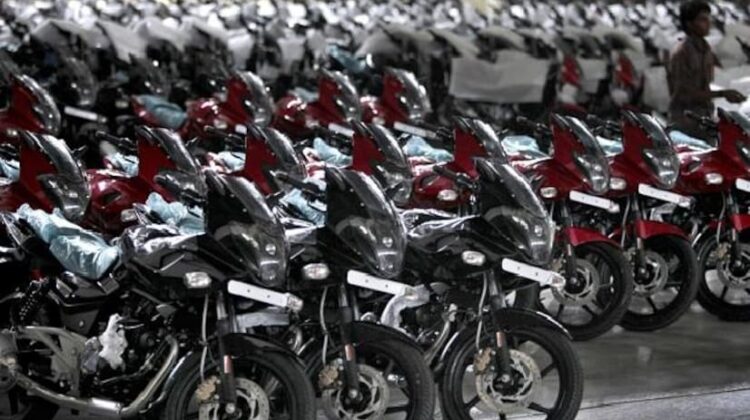
Automobile exports recover in Q4 riding robust two-wheeler shipments
NEW DELHI : Exports of two-wheelers and three-wheelers, which account for nearly 85% of all automotive shipments from India in terms of volumes, showed clear signs of a rebound in the final quarter of FY24, helped by improved demand in key overseas markets.
In January-March, two-wheeler exports grew 30.6% year-on-year to 915,507 units, data released by automotive industry body Society of Indian Automobile Manufacturers (SIAM) showed. The two-wheeler exports are more than five times the passenger vehicle shipments of 165,888 units in the quarter, which experienced a small decline of 3.4%. In terms of value, however, passenger vehicles have a higher unit cost and generally account for the most valuable export segment in India. Similarly, three-wheeler exports grew by 13% year-on-year to just over 70,000 units during the quarter, contributing to an overall increase of 22.5% in total automotive shipments of 1.17 million units in January-March.
However, Bajaj Auto, the largest exporter of two-wheelers, expects a ‘very gradual recovery’ in the segment going forward.
“The export recovery has commenced from its low point, but it is going to be very gradual at least for the first half of the year. Thereafter, its acceleration depends on the steadiness of both availability and rate of currencies in key markets as well as the ability of customers to digest the consequent inflation this far”, Rakesh Sharma, Executive Director, Bajaj Auto, told.
For the full fiscal year, while passenger vehicles saw a modest annual increase in exports of 1.4% to 672,105 units, all other automotive segments declined. Commercial vehicles saw a drop of 16.3% in exports to 65,800 units , and two-wheeler exports, despite the strong last quarter, recorded a 5.3% drop year-on-year.
However, the automotive industry saw significant growth in the domestic market in FY24, led by strong sales in the passenger vehicle and two-wheeler segments. For the entire fiscal year, total domestic sales across segments increased 12.5% over FY23 to 23.8 million vehicles.
In the March quarter, domestic sales saw a more pronounced 20.1% year-on-year growth, pointing to a sustained consumer demand and significant easing of the supply chains leading to better availability of PVs and premium two-wheelers.
“If you look at the fundamentals, the economy is expected to do well and monsoon outlook for this year is also positive. The forecast for FY25 is, therefore, that the industry as a whole will see a strong single-digit growth,” Vinod Aggarwal, president, SIAM, told . “While two-wheelers may still not reach their pre-covid-19 peak, it will be a growth year for the segment. PVs already surpassed pre-covid-19 peaks and commercial vehicles, which were close to their pre-covid-19 peak levels, will see a large pent-up demand after the elections, when infrastructure projects will pick up pace,” he added.
The passenger vehicle segment, which saw an increase from 3.89 million units in FY23 to 4.22 million units in FY24, grew at a compounded annual growth rate (CAGR) of 4.5%, due to a robust demand for utility vehicles, which now constitute 60% of all passenger vehicle sales.
However, the recovery was not uniform across all segments. The two-wheeler category, which grew to 17.97 million units in FY24, faces ongoing challenges in the entry-level segments, still keeping it 14% below its pre-covid peak seen in FY19.
The commercial vehicle segment exhibited a modest improvement compared to the previous year, albeit with mixed performance across sub-categories. While there was a marginal decline in the light commercial vehicles (LCVs) segment, the medium and heavy commercial vehicles (M&HCVs) category showed signs of growth. Specifically, M&HCVs experienced a slight uptick, contributing to a marginal increase in the overall CV sales figures. However, the sector as a whole saw only a small improvement, with total CV sales reaching 968,000 units in FY24, just 0.6% increase over FY23
